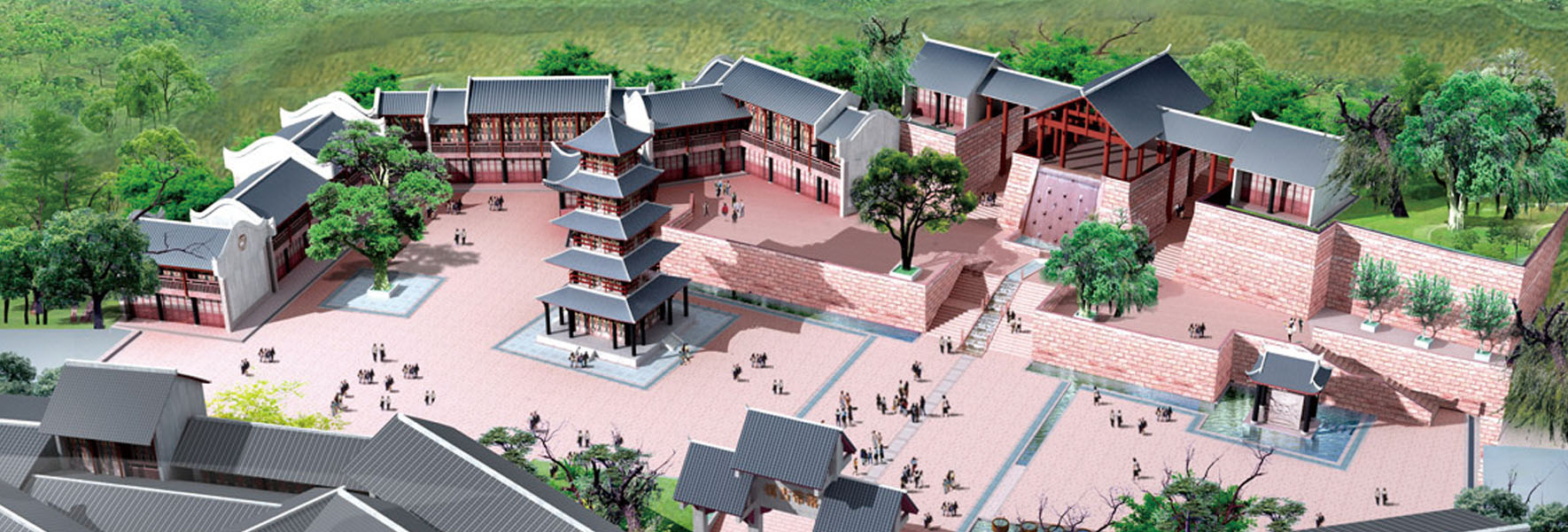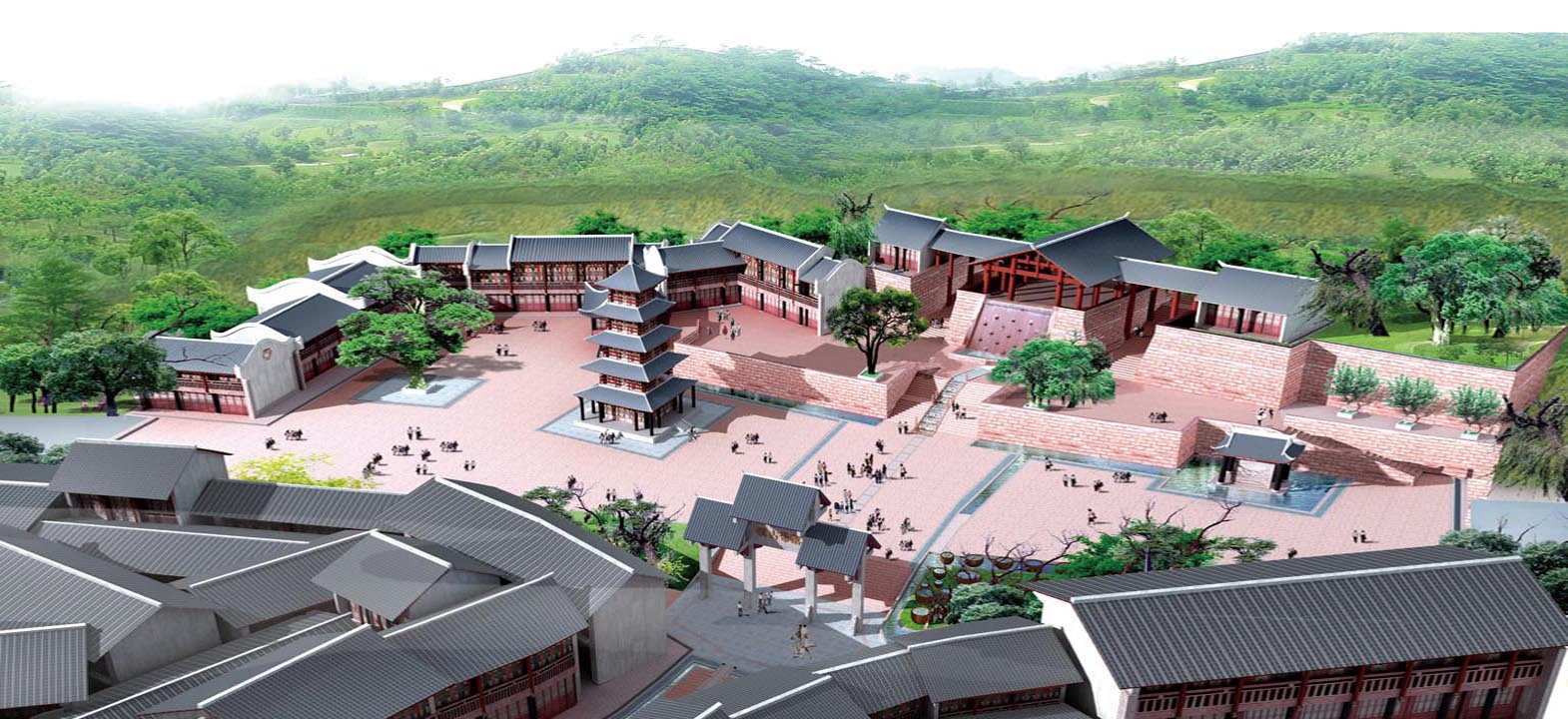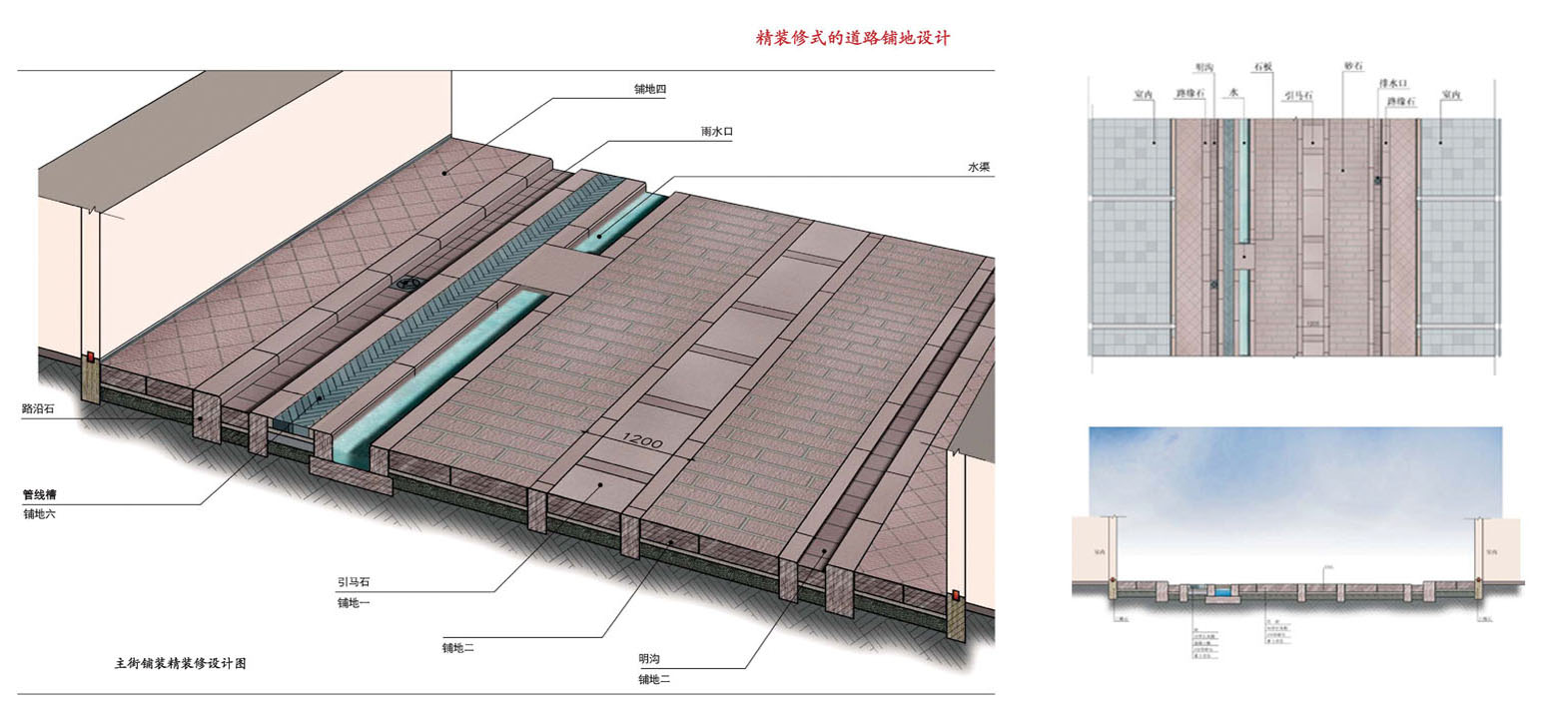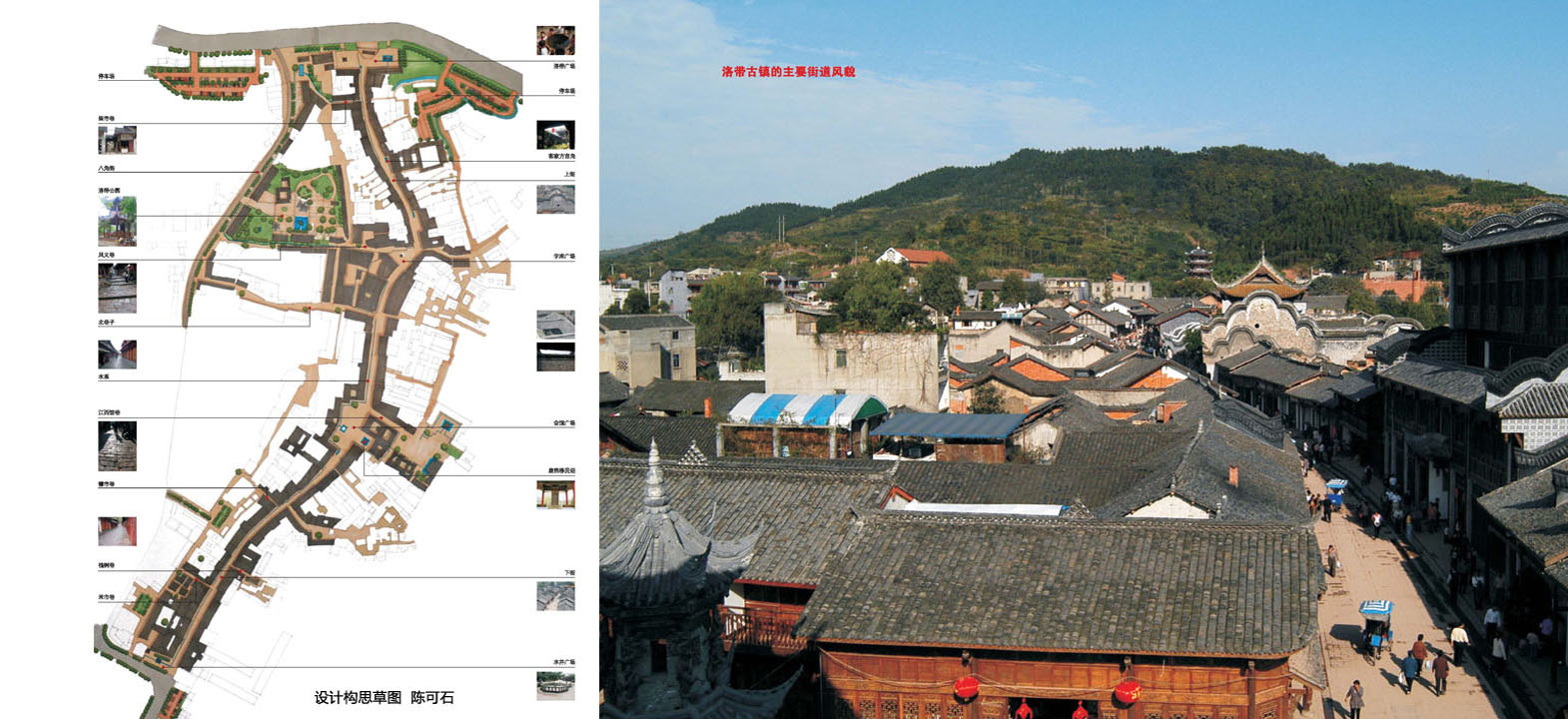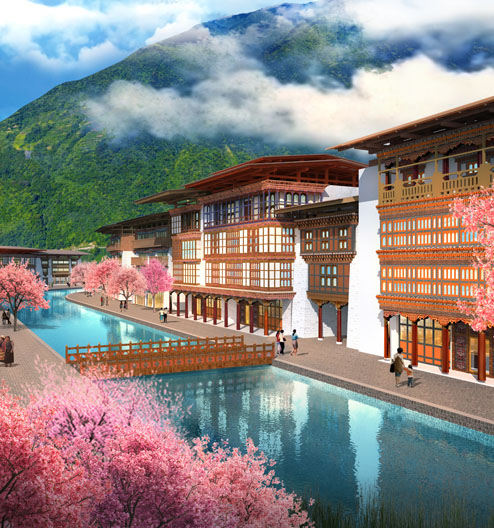Luodai Ancient Town
In 2005 the World Conference of Home Coming Hakka People was held in Chengdu City, and the ancient town of Luodai was selected as the branch venue. To welcome the world guest meeting, Chengdu Longquanyi district committee and district government decided to redevelop Luodai ancient town. Prof. Chen Keshi and his design team, after investigation of the current situation, proposed a strategy that integrating both protection and development for the ancient town. On the premise of economic development, the plan intended to achieve both protection and utilization of the traditional architecture in Luodai. Based on the concept of "fine decoration", the design scheme carries out an overall design from the square, paving, waterscape to the building facade, to actualize an overall promotion of the cultural value and artistic charm of the ancient town.
Luodai Ancient Town is located at the junction of Chengdu plain and Longquanyi mountain in the eastern suburb of Chengdu. It is a famous historical and cultural town in Sichuan Province, with mountains on one side, plain on three sides, 18km to Chengdu in the west, 11km to Longquan in the south, 8km to Hong'an railway station in the north, Shuangxi town in the east, Xiping town in the west, Tong'an town in the south, and Wen'an town in the north. Covering an area of 42.4 km2, the town is rich in agricultural resources and prosperous in commerce and trade. It has always been the political, economic and cultural center of Dongshan district in Chengdu.
Luodai town was built as early as the Three Kingdoms period. Its name was from a story that the jade belt of Liu Chan, the Lord of the Shu Han Dynasty, fell into the octagonal well beside the town. In the Tang and Song dynasties, it ranked first among the “three major towns” in the Dongshan area. Since the Ming and Qing Dynasties, it has become the main naturalization place for immigrants from other provinces, especially the "Hu Guang filling Sichuan" in the early Qing Dynasty, and immigrants from Guangdong, Hubei, Jiangxi, Shanxi, and other provinces have moved in successively. Thus, the South and North immigrants are mixed, and the South tune and North tune coexist. Luodai ancient town is a famous cultural town with a history of thousands of years. Its old street is mainly built in the Qing Dynasty, with a pattern of "one street and seven Lanes". There are four Hakka guildhalls for Guangdong, Jiangxi, Huguang and Northern Sichuan. The Hakka museum and Hakka park are located in it. It is a real “town of Hakka and guildhall”.
The cultural charm of Luodai ancient town mainly comes from the deep accumulation of Hakka culture. This is a town that only 18 km away from Chengdu, Hakka language, culture, custom, architecture, etc. are completely preserved. Although they are facing the erosion and impact of modern society and culture, the self-consciousness and long-term experience of Hakka people keep their own culture prosperous and continually developed.
First of all, in terms of language, the "local Cantonese" that Luodai Hakkas said is actually the language that Hakkas brought from the Hakka base camp. Although it has a small amount of integration with Sichuan Mandarin, its essence and style remain unchanged. This kind of ancient language, like a continuous river, flows in the fields, villages, markets, and teahouses of Luodai ancient town, flows in the life of every Hakka people and does not change with the passage of time.
Secondly, in terms of culture and customs, the Hakka style presented by Luodai Ancient Town is also very obvious, and the lifestyle of residents "farming, reading and inheriting" is still unchanged. Being good at cultivation and development is a kind of survival skill developed by Hakka people in the process of migration from north to south. However, the Hakka people have always adhered to the ideal of Confucian culture in the land that is not fertile, and regarded the cultivation, study and official career as the highest goal of life.
Luodai ancient town also has a unique guild hall culture. The outside world's recognizing Luodai is mostly from the guild buildings built by Hakka people. On one hand, it reflects the mentality of the same ethnic group in the immigration period, and also reflects the different architectural traditions and styles of different ethnic groups. In the early Qing Dynasty, after immigrants from different provinces entered Sichuan, they often defined their respective attribution by their origin (provincial nationality), rather than by race or language. So there are different regional style guild buildings.
